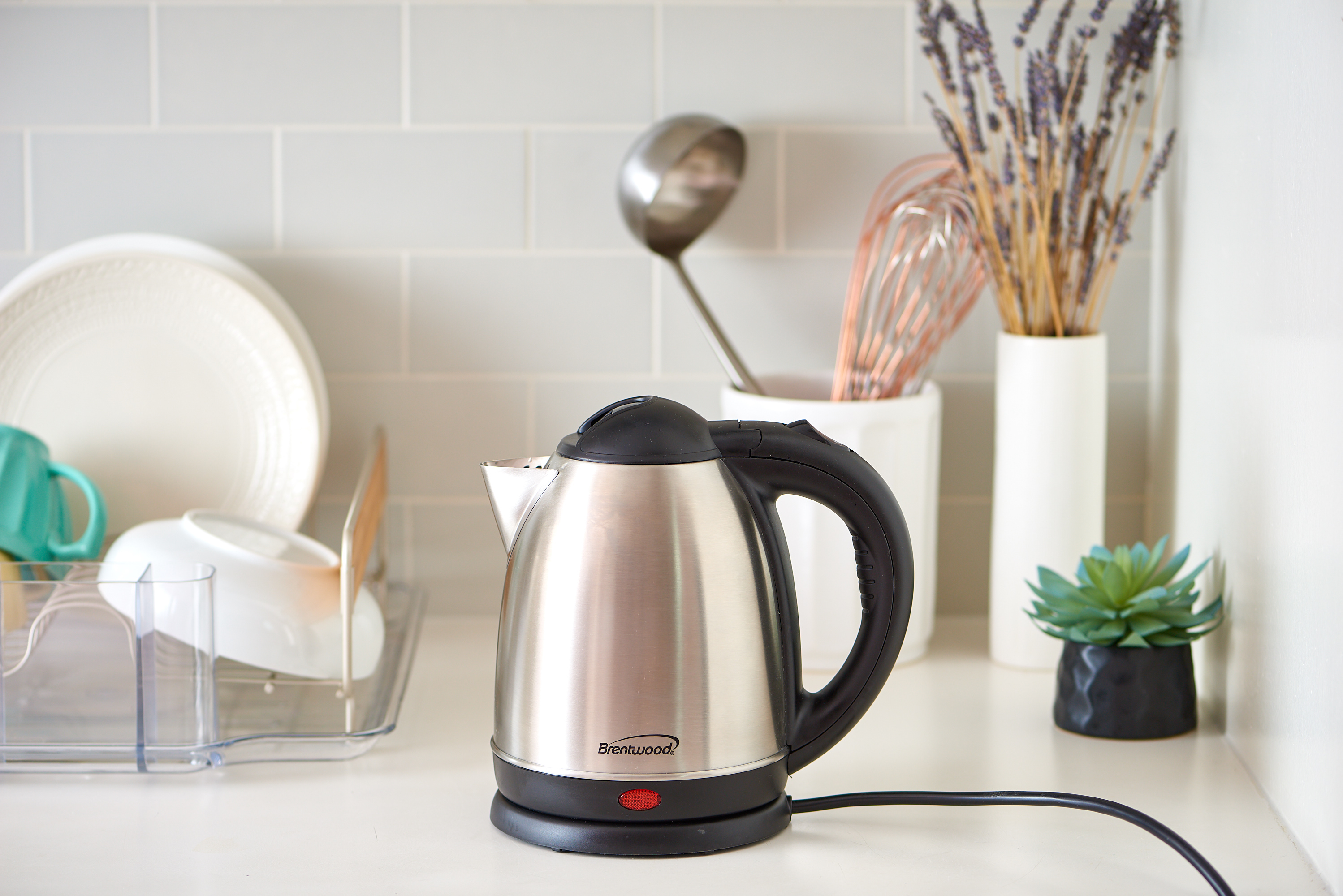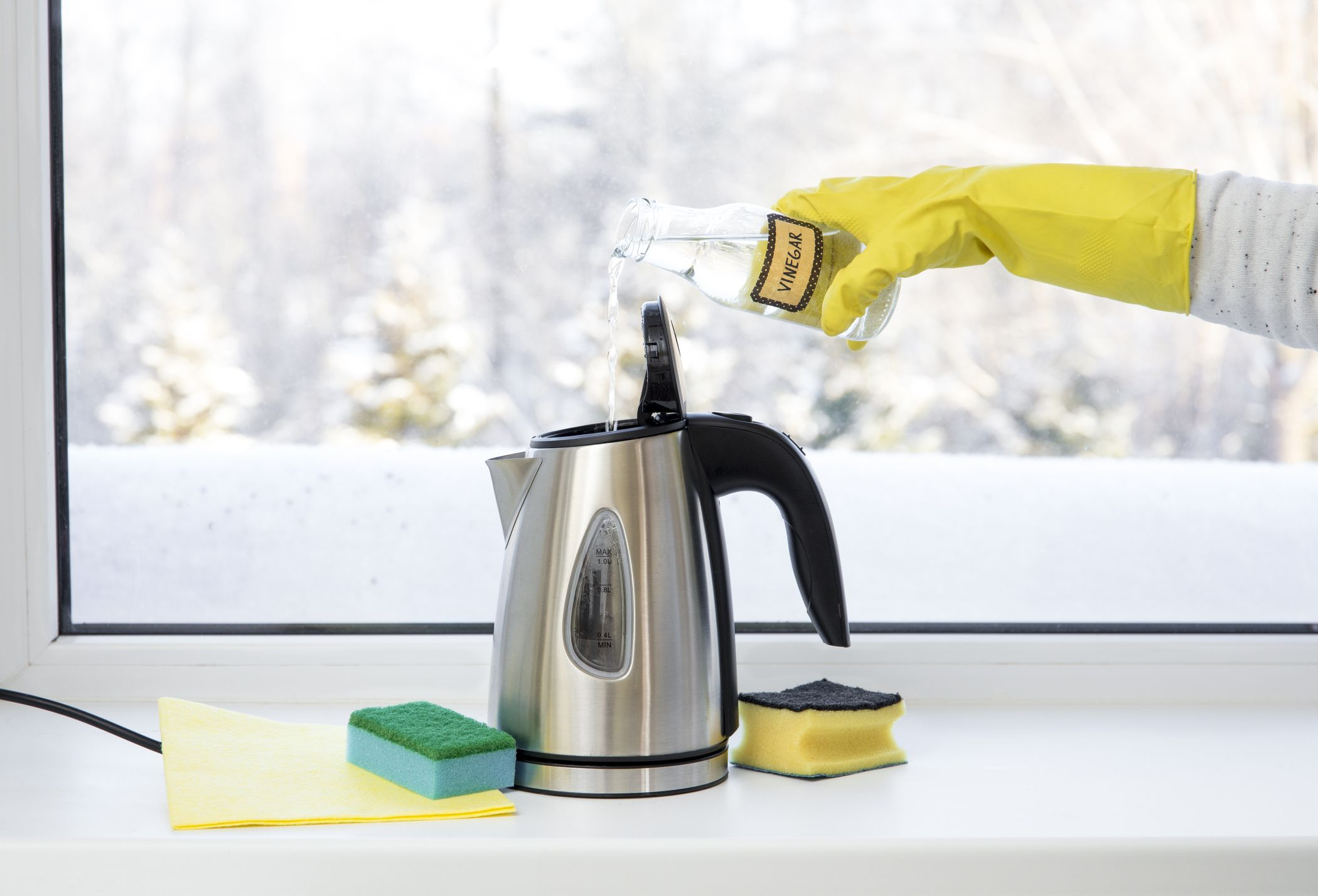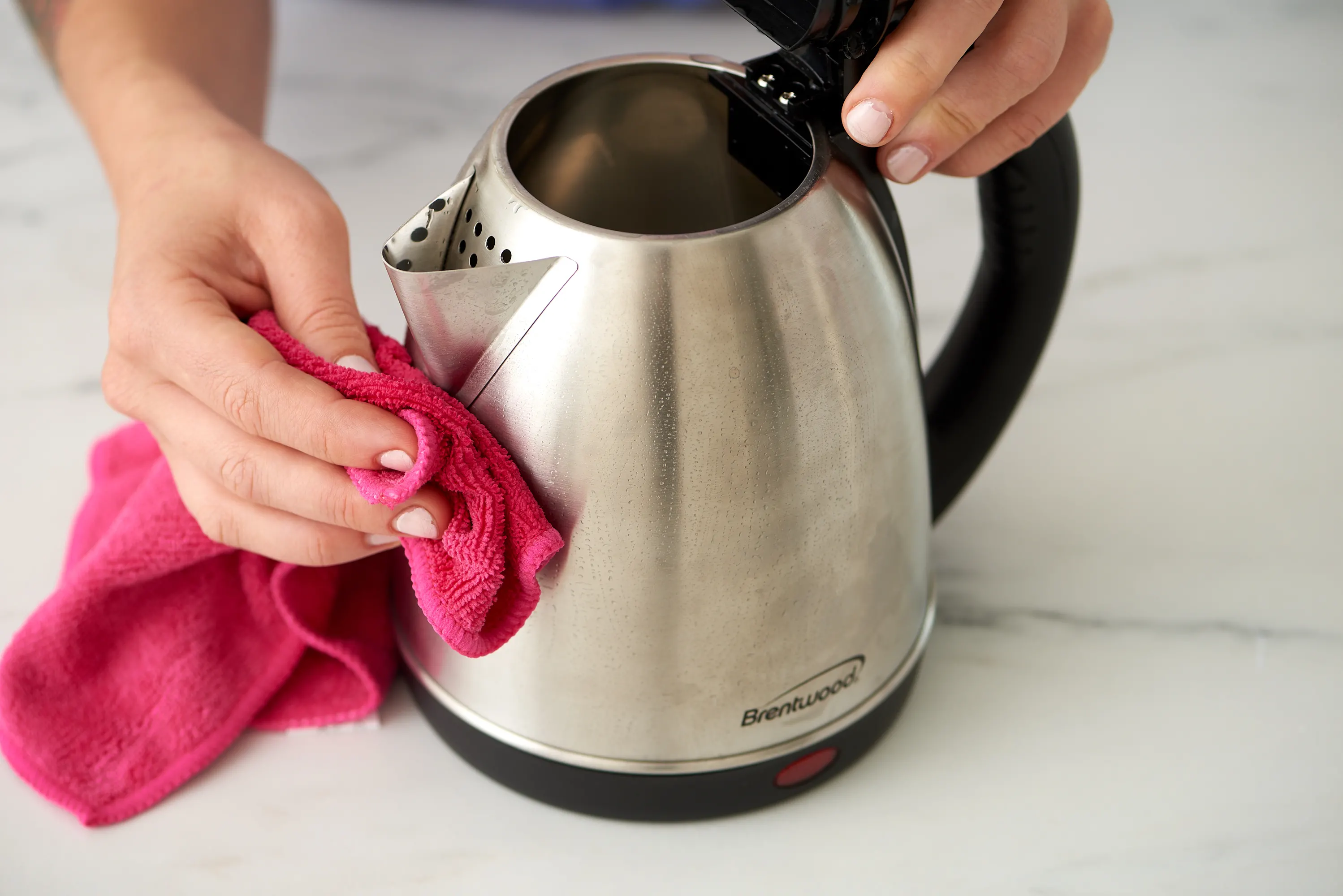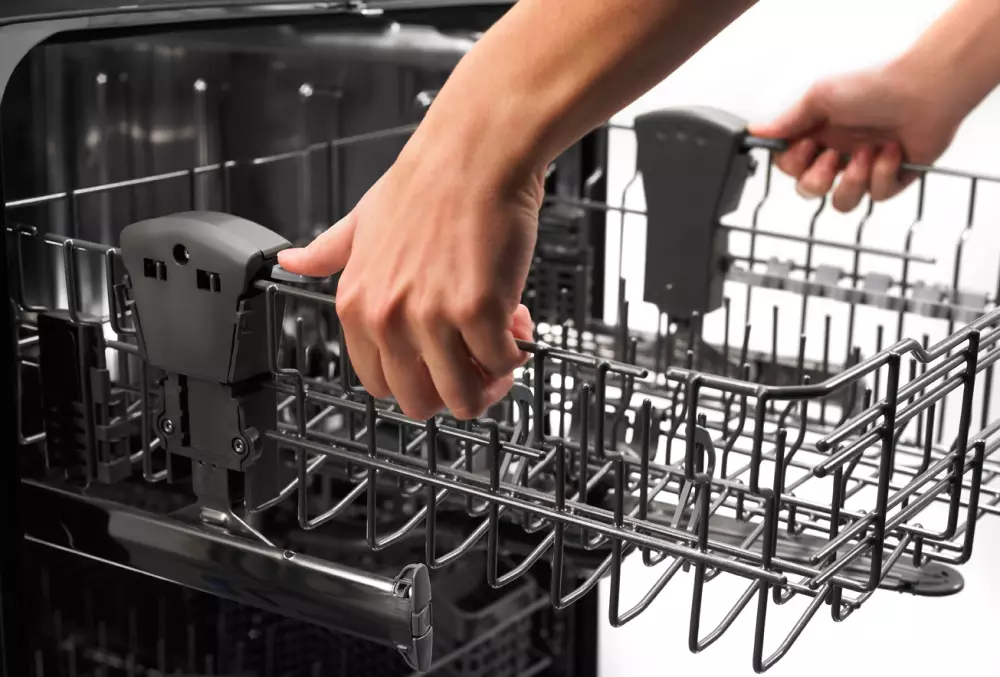How To Clean a Kettle: Your Complete Guide To Descale Yours
Kettle cleaning is no laughing matter. It's a serious task, and it must be done correctly. You might think that all you need to do to clean your kettle is fill it with a cup of water and boil it for a few minutes, but this is not the case. If you do this, you could end up permanently damaging your kettle, and that would be bad news for both you and your wallet, and you won't be able to enjoy your cup of coffee anymore.
In this blog post, we'll walk you through how to clean a kettle properly so you can enjoy years of safe, efficient use without worrying about expensive repairs or replacement costs.
If you own a kettle, chances are it's been a while since you cleaned it or hired a house cleaning service to clean your kitchen appliance for you. It's understandable. Who wants to spend precious time cleaning a device that boils water?
But how do you go about it when you get around to it? Are there particular products that will help? And what about those annoying scale deposits?
Whether you're just starting with cleaning your own home or have been doing it for years, we've got all the tips and tricks you need to get your kettle sparkling again.
This guide will walk you through how to clean a kettle step-by-step. By the end, you'll know exactly what products work best for your specific needs and how to remove scale deposits from your kettle in no time. Let's dive right in!

What You'll Need
Instructions
1. Cleaning the Water Filter
Remove the water filter or cartridge first so you may clean it individually if the model of your kettle has one. The directions for cleaning your kettle can be found in the manual.
The best you can do if you lose the manual is to soak the filter in white vinegar and hot water solution for about five minutes, scrub it with a bottle brush or an old toothbrush and then rinse it thoroughly.
2. Descaling the inside of a kettle
Descaling the inside of your stainless steel kettle is simple and easy, as everything you need to clean an electric kettle can be found inside your kitchen.
You only need to pick the cleaning method that suits you best or what natural cleaning material is available for you. You can use baking soda, white vinegar, lemon juice, or citric acid powder to descale a kettle.
Descale a kettle with Baking Soda:
To clean an electric kettle's interior with baking soda, fill the appliance with a mix of a teaspoon of it with warm water into the electric kettle, and let it boil for a few minutes. Then, discard the boiled water and rinse the interior well with fresh water.
You can also try another cleaning method. Create a baking soda and warm water paste and apply the mixture to the electric kettle. Let the paste sit for 5 to 10 minutes while the electric kettle is not plugged in.
Gently scrub the limescale build-up off using an old toothbrush or bottle brush. Then rinse the kettle a couple of times, and boil some fresh water to examine the cleanliness and quality.
Descale a kettle with Vinegar solution:

To clean the electric kettle's interior with vinegar, fill the appliance with equal water and vinegar for up to one-half full. Turn the electric kettle on to boil the solution, then switch it off if it doesn't automatically shut down.
Let the water and vinegar solution sit for about 20 to 30 minutes, then discard it after. Boil some water again to eliminate the vinegar's taste and smell.
Descale a kettle with Lemon juice or citric acid powder:
To clean an electric kettle with lemon, cut it into two and squeeze the juice inside. You can also opt to scrub the kettle's interior with the lemon halves to clean the appliance and eliminate hard water stains and limescale build-up.
Then slice them into small pieces, add them to the cold water, and bring the solution to a boil. Let the mixture sit for about 20 minutes or more while the kettle is unplugged before pouring hot water. Boil some clean water to eliminate the kettle's lemon taste.
If lemons are unavailable, you can use citric acid powder to clean the inside of the electric kettle. Fill the kettle with cold water until it is half-full, then mix two tablespoons of citric acid powder.
Turn the kettle on to heat and bring the solution to a boil, then turn it off. Let the boiling water solution sit for around 20 minutes or more before you discard the water.
3. Scrubbing the Kettle
After boiling water solutions and discarding them from your kettle, it's time to scrub it clean. For this step, make sure that your kettle is unplugged.
To scrub your electric kettle, use a soft cloth or sponge, a soft-bristled bottle brush, or an old toothbrush to clean the limescale build-up off the interior of your kettle. Pay special attention to any seams, ridges, and spouts. Avoid scrubbing the heating element because it can cause your kettle to be inefficient.
For a deeper clean, you can soak the brush or damp cloth in a baking soda solution. Just be sure to rinse it well afterwards to eliminate the aftertaste.

4. Cleaning the Kettle's exterior
The outside of the kettle only needs light cleaning since it has less contact with water which causes it to have hard water stains and limescale.
To clean the kettle's exterior, wipe it down with a soft cloth or sponge and dip it in dish soap with hot water to remove splashes and stubborn stains. For more difficult spots, you can use the exact water solutions you used to seal the inside of your kettle, then rinse your appliance afterwards.
Avoid submerging your kettle in the water to avoid ruining the heating element. Lastly, wipe your kettle until it is completely dry using a soft microfiber cloth with a small amount of olive oil for a fully clean and sparkling kettle.
It's Time to Enjoy Your Coffee or Tea!
And that's all you need to know about cleaning a kettle!
It has never been simpler to make soup, a delicious cup of tea, or a cup of coffee, yet the right to do so is jeopardised if the equipment needs to be properly cleaned. Knowing how to clean the kettle is crucial since, more importantly, our health may be in danger.
We hope this guide helped you out. If you need a comprehensive guide on how to clean your kitchen, feel free to check our blogs. We'll be happy to help you out!
FAQs
Why should you clean your stainless steel kettle?
Kettles are one of the essential appliances in your kitchen. But if you don't clean it regularly, it can harbour bacteria and create an environment that encourages mould growth. The result is a disgusting kettle that takes up space and makes your kitchen smell terrible.
If you've never cleaned your kettle before, you might wonder why it's necessary. After all, it just boils water. But there are some good reasons to clean your kettle regularly.
- It helps keep the taste of your tea fresh and clean.
- It can prevent rust from forming inside the kettle over time.
- It keeps bacteria from building up on the surface of your kettle, which could then get into your next cup of coffee or tea.
How often to clean an electric kettle?
If the kettle is used daily to heat water, it should be descaled to remove hard water minerals at least four times annually. The manufacturer's recommendations every two months should be followed if the kettle contains a water filter or cartridge.
What is the best product to remove limescale?
Any mild acid should work to remove limescale in a kettle.
Examples are a solution of white vinegar and water or lemon juice applied with a moist towel or sponge.
Does vinegar damage an electric kettle?
Cleaning your electric kettle with diluted white vinegar is safe and effective and doesn't damage your appliance.
Cleaning with vinegar can be an easy solution to descale your electric kettle. The acid in vinegar may reduce mineral formation. However, before washing the kettle, you can refer to your owner's manual to learn the cleaning techniques.
How to prevent kettle limescale?
When mineral-rich hard water rests and evaporates, a buildup of minerals occurs where limescale is in the kettle. To avoid kettle limescale and prevent rust from building up in your keep kettles, you need to wipe up your appliance and completely dry it after each use.
Alternately, you can half-fill the kettle with water, add two tablespoons of vinegar to each pint, and let it sit for four hours to prevent scale. Drain the kettle next, and then remove the loose scale. If required, repeat, then rinse.


